Morning Eye Candy: A Late Valentine
Posted in Around the Garden, Photography on February 16 2013, by Matt Newman
Will it snow today? Won’t it? Either way, ‘Phoenix’ makes the weather look good.
Acer x conspicuum ‘Phoenix’ — Photo by Ivo M. Vermeulen

Inside The New York Botanical Garden
Posted in Around the Garden, Photography on February 16 2013, by Matt Newman
Will it snow today? Won’t it? Either way, ‘Phoenix’ makes the weather look good.
Acer x conspicuum ‘Phoenix’ — Photo by Ivo M. Vermeulen
Posted in Programs and Events on February 15 2013, by Matt Newman
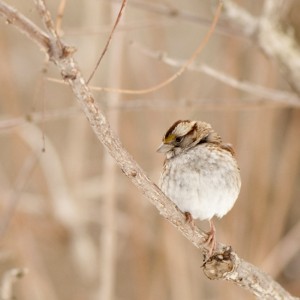 Whether you’re binocular-savvy or just looking to lock down your birdwatching game, this is your weekend! And thanks to President’s Day, it’s the perfect opportunity to take part in the Great Backyard Bird Count, if only because you’ll have three straight days to join us at the NYBG. Winter is undeniably the best time of year to see our feathered friends on the wing, owing to the barren branches and annual mating habits of the raptors, songbirds, and waterfowl that call our neck of the Bronx home. So get off your couch, strap on some boots, and join up!
Whether you’re binocular-savvy or just looking to lock down your birdwatching game, this is your weekend! And thanks to President’s Day, it’s the perfect opportunity to take part in the Great Backyard Bird Count, if only because you’ll have three straight days to join us at the NYBG. Winter is undeniably the best time of year to see our feathered friends on the wing, owing to the barren branches and annual mating habits of the raptors, songbirds, and waterfowl that call our neck of the Bronx home. So get off your couch, strap on some boots, and join up!
Even if you’re not quite an expert on all things avian, it’s never too late to learn; Debbie Becker will be on hand for her weekly Saturday birdwalk, where she’ll be more than happy to give lay birders a crash course in spotting and identification. And because the GBBC is so important to helping ornithologists and environmentalists understand the state of the nation’s bird populations, we even have a few pairs of binoculars to loan out at the Visitor’s Center for those who don’t have their own.
Over in the Enid A. Haupt Conservatory, we continue our yearly winter tradition of Tropical Paradise with guided tours, photography contests, camera workshops, and all the warmth of a South American rain forest. So if you’re sick of wrestling with the cold, this is an opportunity to at least pretend you’re a few thousand miles south, trading your parka for a t-shirt.
We know it’s chilly out, but we have more than a few cures for your winter woes. We’ll even be open on Monday, so come visit!
Posted in Around the Garden, Photography on February 15 2013, by Matt Newman
I figure everyone’s had enough of the winter landscape for one week, so I thought we’d step inside the Enid A. Haupt Conservatory for a teensy reminder that not all the world is an icebox right now.
Photo by Ivo M. Vermeulen
Posted in The Orchid Show on February 14 2013, by Matt Newman
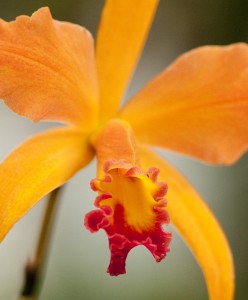 Timpani drums and chorus lines may seem a bit dramatic for a flower exhibition–at least up until you see what’s been growing behind the doors of the Nolen Greenhouses for Living Collections! While Tropical Paradise winds down for another year, NYBG horticulturists are already hard at work on our next monumental event, prepping the Enid A. Haupt Conservatory for the arrival of thousands upon thousands of technicolor beauties. For over a decade now, The Orchid Show has defined spring in New York, snapping us out of our winter doldrums and dropping us straight into shorts and sandals. And this year, we’re not missing a beat.
Timpani drums and chorus lines may seem a bit dramatic for a flower exhibition–at least up until you see what’s been growing behind the doors of the Nolen Greenhouses for Living Collections! While Tropical Paradise winds down for another year, NYBG horticulturists are already hard at work on our next monumental event, prepping the Enid A. Haupt Conservatory for the arrival of thousands upon thousands of technicolor beauties. For over a decade now, The Orchid Show has defined spring in New York, snapping us out of our winter doldrums and dropping us straight into shorts and sandals. And this year, we’re not missing a beat.
Under the curation of our Vice President of Glasshouses and Exhibitions, Francisca Coelho, The Orchid Show may just be the blockbuster of the year. We’re certainly buzzing with excitement at the thought of it. But maybe you need a small reminder of the myriad colors waiting for you come March.
Posted in Science on February 14 2013, by Scott Mori
Scott A. Mori, Ph.D., Nathaniel Lord Britton Curator of Botany has been studying New World rain forests for The New York Botanical Garden for nearly 35 years. He has witnessed an unrelenting reduction in the extent of the forests he studies and, as a result, is dedicated to preserving the diversity of plants and animals found there.
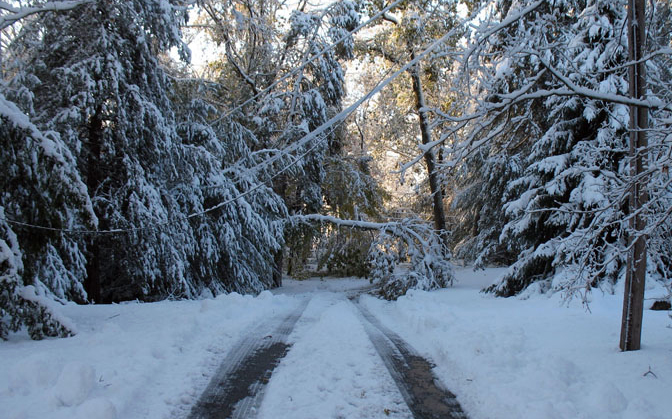
“So what,” you must be saying to yourself. In spite of how obvious the title is, the lack of cold weather in the tropics contributes both directly and indirectly to tropical biodiversity, the topic of this blog.
One of the many reasons that there are high numbers of species represented by low numbers of individuals in old growth tropical forests–compared to the opposite situation in temperate forests–is because of the greater number of plant/animal interactions in the former. In one of our 2.5 acre tree study plots in central Amazonian Brazil, we registered 285 species of trees with diameters at or above four inches at breast height. Because our plots average 600 trees above this size class per plot, almost every second tree we sampled represented a different species. In contrast, there are fewer than 100 species of trees of all size classes in the entire state of Wisconsin, where I grew up.
Posted in Around the Garden, Photography on February 14 2013, by Matt Newman
Whether you’re laying out the credit card on a romantic evening reservation, or treating yourself to a singles night with Szechuan take out and bad sci-fi movies, the NYBG wishes you the best this Valentine’s Day! We love you all–in a platonic, happy, check-out-these-cute-birds kind of way.
Photo by Ivo M. Vermeulen
Posted in Around the Garden, Photography on February 13 2013, by Matt Newman
Pat Gonzalez, out on one of her patented NYBG nature walks, came upon this curious chickadee the other day. We can only assume it was anxious to make a call.
Photo by Pat Gonzalez
Posted in Photography on February 12 2013, by Ann Rafalko
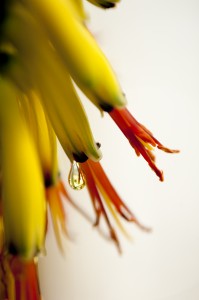 As you may have noticed, our announcement of this week’s Tropical Paradise Photography Contest winners is quite late. Why? Because of the overwhelming number of entries, and the lopsided nature of such. So, I’m going to make an appeal: if you are coming to the Conservatory with an express interest in entering this contest, please, try your hand at taking some “Sense of Place” shots! Not only will you help us in our judging, but you will exponentially enhance your chances of winning one of our prizes! How so? This week there were 120 photographs entered into the “Macro” category, and just 17 “Sense of Place.” How do you like them chances?
As you may have noticed, our announcement of this week’s Tropical Paradise Photography Contest winners is quite late. Why? Because of the overwhelming number of entries, and the lopsided nature of such. So, I’m going to make an appeal: if you are coming to the Conservatory with an express interest in entering this contest, please, try your hand at taking some “Sense of Place” shots! Not only will you help us in our judging, but you will exponentially enhance your chances of winning one of our prizes! How so? This week there were 120 photographs entered into the “Macro” category, and just 17 “Sense of Place.” How do you like them chances?
I know that “Sense of Place” shots can be difficult, but with a little creativity they can be really great. Some thoughts: Get down low. Get up high (there are some cool staircases throughout the Conservatory galleries). Think about lighting. Look up! Look down! Explore. The Aquatic Plants gallery is really popular for this category, but all of the houses make really great subjects. Experiment! Try new things! That’s part of the fun of this contest. And if you need some help, check out the great videos we did with professional photographer Rich Pomerantz at the bottom of this page.
And don’t forget, it’s easy to enter. Simply upload your pictures to Flickr (please limit them to photographs taken inside the Conservatory during Tropical Paradise), add them to our Group Pool, tag them with #tropicalparadise, and then sit back and hope we pick your pix! And don’t think that just because you’re snapping with an iPhone, you can’t take part–all skill and equipment levels are welcome to participate.
Okay, lecture over! Let’s get on to the winners!
Posted in Gardening Tips on February 12 2013, by Sonia Uyterhoeven
Sonia Uyterhoeven is the NYBG‘s Gardener for Public Education.
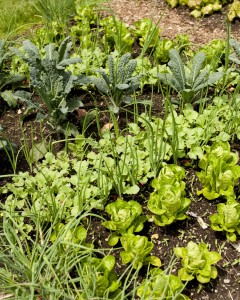 In the coming weeks, we will be discussing what to do with your garden in the aftermath of hurricanes and significant storms such as Super Storm Sandy. One task that every gardener should consider after an event that involves flooding is to get the soil tested. For coastal gardeners, the influx of salt water can potentially saturate the garden with harmful salt. Because the salinity of the soil may have changed significantly, it is worth knowing what you are working with. Further, it is important to start your gardening season with healthy soil, both for your sake and that of your plants. This week, we will look at how to take a soil sample in your garden, moving on to the problem of salt injury (saline soils) during next week’s post.
In the coming weeks, we will be discussing what to do with your garden in the aftermath of hurricanes and significant storms such as Super Storm Sandy. One task that every gardener should consider after an event that involves flooding is to get the soil tested. For coastal gardeners, the influx of salt water can potentially saturate the garden with harmful salt. Because the salinity of the soil may have changed significantly, it is worth knowing what you are working with. Further, it is important to start your gardening season with healthy soil, both for your sake and that of your plants. This week, we will look at how to take a soil sample in your garden, moving on to the problem of salt injury (saline soils) during next week’s post.
Before you take your soil sample, determine the areas that you would like tested, and remember that you will not be taking just one sample of your garden’s soil unless you are testing a uniform space. The soil in your garden will most likely differ based on location and use. For example, the area near the foundation of your home will be different from the untouched areas near the edge of your property, while the soil from your lawn will differ from the soil in one of your ornamental beds.
Posted in Around the Garden, Photography on February 12 2013, by Matt Newman
You wouldn’t think bare metal could adapt, but visually this proves true with the art of Manolo Valdés: Monumental Sculpture. Each piece was designed and carefully sited to not only complement its surroundings, but to contrast with them–regardless of season. Now, in winter, each sculpture presents differently.
Stop in to the NYBG any time between now and May 26, and you’ll have the opportunity to see each work in its element, whether that’s winter, spring, or summer.
Photo by Ivo M. Vermeulen